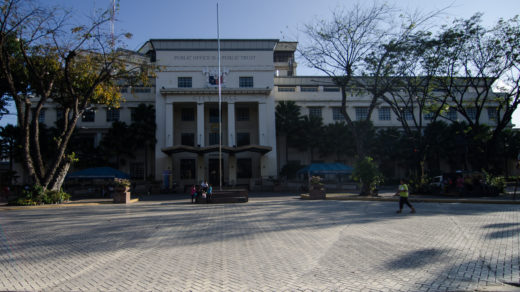If you ask a couple of people at random what they think is the definition of multimedia, chances are you will get a lot of varying answers. This should not be surprising though because through the years it has completely evolved its definition due to its wide scope. People’s perception of multimedia is generally shaped by how it directly affects them in their personal lives. According to Ralf Steinmetz & Clara Nahrstedt’s book, Multimedia Systems (2004):
The field is at the crossroads of several major industries: computing, telecommunications, publishing, consumer audio-video electronics, and television/movie/broadcasting.
[…] As a result, it is no surprise when discussing and establishing multimedia as a discipline to find difficulties in avoiding fuzziness in scope, multiplicity of definitions, and non-stabilized terminology. When most people refer to multimedia, they generally mean the combination of two or more continuous media, that is, media that have to be played during some well-defined time interval, usually with some user interaction. In practice, the two media are normally audio and video, that is, sound plus moving pictures.
I agree with them regarding this more so since we also had a lively discussion about this in class. Multimedia is basically two or more media modalities presented simultaneously. It is also good to note that, as mentioned in the above passage, multimedia usually has some user interaction.
Speaking of interactivity, one article that was included in our reading list for Unit 1 is a synthesis by Unpapillones. There were a lot of good points raised and there is a particular passage quoted from Professor Jens F. Jensen (1998) that piqued my interest:
This new media on interactivity now presents a great challenge to the traditional media. Since interactivity connotes freedom of choice, personal development, self-determination, journalists must live up to the challenge of technology otherwise, he be left behind to just a non-participative spectator.
This is relevant nowadays as more people are slowly choosing new media over traditional media. Once the users were given control on the distribution of information – who, what, when, where and how – the choice was easy. The power to drive, shape and manipulate information at will through technology has greatly impacted discourse. I can’t say that this is entirely a good thing but it is a situation which we have no choice but to welcome simply because change is constant. Looking at the bright side, this shift also challenges norms and encourages new thought leaders to speak up as many are also bound to get lost in the fast paced digital world.
Multimedia has come a long way and it doesn’t seem to be stopping anytime soon. Whatever may start out as a buzzword, say like Web 2.0, can evolve into a revolution. While reading the provided links for Web 2.0 I found myself chuckling every now and then. The brilliance of it all! Geeks from all over were doubtful at first but not much later they have caught on and started to suit (or start) up. Among one of my favorite reads was the one from Paul Graham who narrated how he hated Web 2.0 at first but had a change of heart later on. He wrote on his site http://paulgraham.com/web20.html (2005):
[…] It may have seemed as if not much was happening during the years after the Bubble burst. But in retrospect, something was happening: the web was finding its natural angle of repose. The democracy component, for example—that’s not an innovation, in the sense of something someone made happen. That’s what the web naturally tends to produce.
The pattern I notice here is, yet again, the people are provided control – in Paul’s words, the democracy component. If we tie all these together, we would be able to see the bigger picture.
Internet as we know now has become a far outcry of what it was before. A slew of services readily available on the internet – cloud computing – has become ubiquitous but somehow a new niche seems to be created continuously.
An example of an emerging trend is the Serverless (https://serverless.com/) which according to their website “is a CLI tool that allows users to build & deploy auto-scaling, pay-per-execution, event-driven functions.” This allows a programmer to code without minding the server – just code and let go. Empowerment seems to be the name of the game in cloud computing and honestly, only a few are complaining. It can’t be blamed though that there are a few who raised eyebrows because what is at stake is anything but small – data security. It is a fact that there isn’t really a “cloud” and a server does exist somewhere with a system administrator managing it. The only difference is the business doesn’t have to worry about it. However, as our technology advances, not only the engineers, programmers and developers are getting better at what they do but hackers, too. In an article written recently in http://www.diversity.net.nz/serverless-security-the-top-ten-risks/2018/01/22/ by Ben Kepes, a business leader and “technology evangelist”, he recounted a meeting he had with PureSec – a small startup company whose main goal is securing serverless computing and that they remain that way. PureSec has determined the 10 serverless security risks. These are:
• Function Event Data Injection
• Broken Authentication
• Insecure Serverless Deployment Configuration
• Over-Privileged Function Permissions & Roles
• Inadequate Function Monitoring & Logging
• Insecure 3rd Party Dependencies
• Insecure Application Secrets Storage
• Denial of Service & Financial Resource Exhaustion
• Serverless Function Execution Flow Manipulation
• Improper Exception Handling & Verobe Error Messages
The risks PureSec enumerated were of no laughing matter and any business who may experience one or a few of these may prove that it is a great price to pay for the luxury the technology of the next generation of cloud computing provides. Still, we must remain hopeful as we continue to leverage on arising technologies because it is certain that regardless of how many pitfalls we encounter, a new start up will emerge with bigger and better solutions. The show must and will always go on.
New media and technology are both unpredictable and incessantly changing. We often find ourselves caught in the cusp of revolutionary advancements which leaves us uncertain to some extent. A concept presented by McLuhan (1967) is that “the introduction of new technologies into a society has a determining influence on how that society is organized, how its members perceive the world around them and how knowledge is stored and shared.” In his posthumously published book Laws of Media (1988), McLuhan’s brilliance was synthesized in a tetrad of media effects. He phrased them as questions which we can use as guide in analyzing artefacts – or its “grammar and syntax”. They are:
• What does it enhance?
• What does it make obsolete?
• What does it retrieve that had been obsolesced earlier?
• What does it flip into when pushed to extremes?
If we placed these questions into perspective and ask them in the light of the changes in multimedia and technology that we see today, we see that the fourth law – that an artefact reverses into an opposing form when pushed to extremes – is exactly what is happening now. With all the ideologies, debates and politicking going around the digital world, we are seeing the flip side of this information revolution which I must add, even merited a session in the Senate halls. We live in interesting times and though we can’t say specifically how we can seamlessly explore cyberspace without falling into the more than occasional landmines, we can still hold on to the fact that obsolescence, enhancement and reversal are not intended to be chronological and that eventually the world has a way of fixing things on its own.
As a student of BAMS in the University of the Philippines, I’m greatly honored to be learning these concepts and exploring these theories under the guidance of esteemed professors such as Professor Sangalang who allows us to voice out our thoughts, engage in discussions and reconstruct our learnings on our own. By equipping us with readings, allowing us to author our own concepts, fostering interaction amongst ourselves and cultivating our understanding with his inputs – learning has come to us naturally.
There are a number of jobs open to us in the future should we graduate from our degree successfully – specialists and managers in multimedia, communication, knowledge and information technology. If we are to truly appreciate our craft, we must have a strong foundation. Mastery of multimedia arts and technology will get us far but it is only by having a heart and passion for our work that we can make a difference. The ideologies we learned in MMS 102 will serve as pillars of the succeeding skills we have yet to earn in the future and with confidence I can say that our foundation is impressive and it would help us carry on as we go to greater heights.
References:
- Steinmetz, Ralf and Nahrstedt, Clara. Multimedia Systems, 2004.
- Unpapillones. A Synthesis on Aspects of Interactivity, Hypertext and Hypermedia, and Social Media. January 9, 2013. February 2, 2018. https://unpapilloness.wordpress.com/
- Graham, Paul. Web 2.0. November 2005. February 2, 2018. http://paulgraham.com/web20.html (2005):
- Kepes, Ben. Diversity Limited. Serverless Security – The Top Ten Risks. January 22, 2018. February 2, 2018. http://www.diversity.net.nz/serverless-security-the-top-ten-risks/2018/01/22/
- McLuhan, Marshall. Laws of Media (1988). ARCHIVED – Old Messengers, New Media: The Legacy of Innis and McLuhan. March 6, 2007. February 2, 2018. http://www.collectionscanada.gc.ca/innis-mcluhan/030003-2010-e.html
- February 2, 2018. https://serverless.com/


